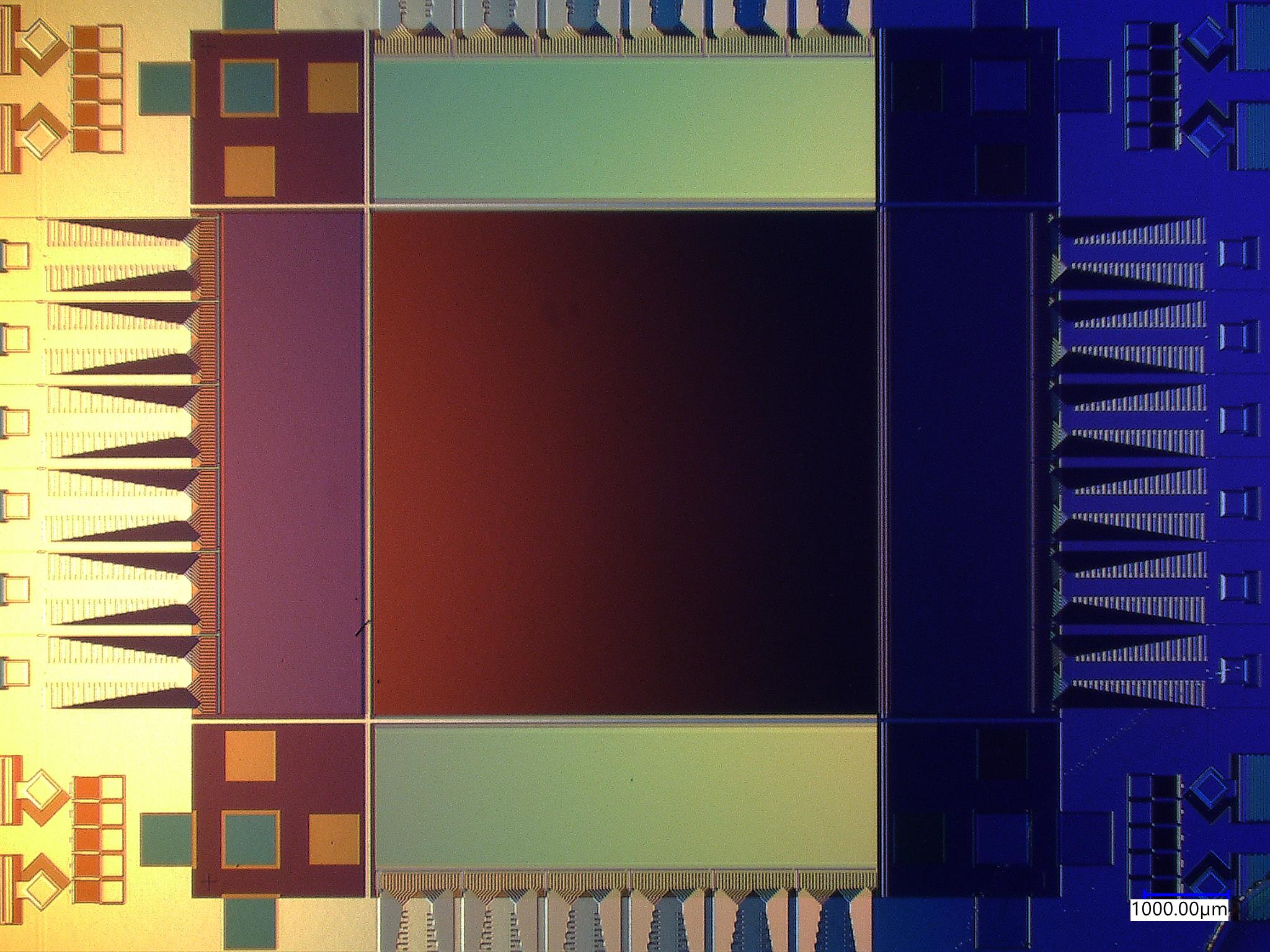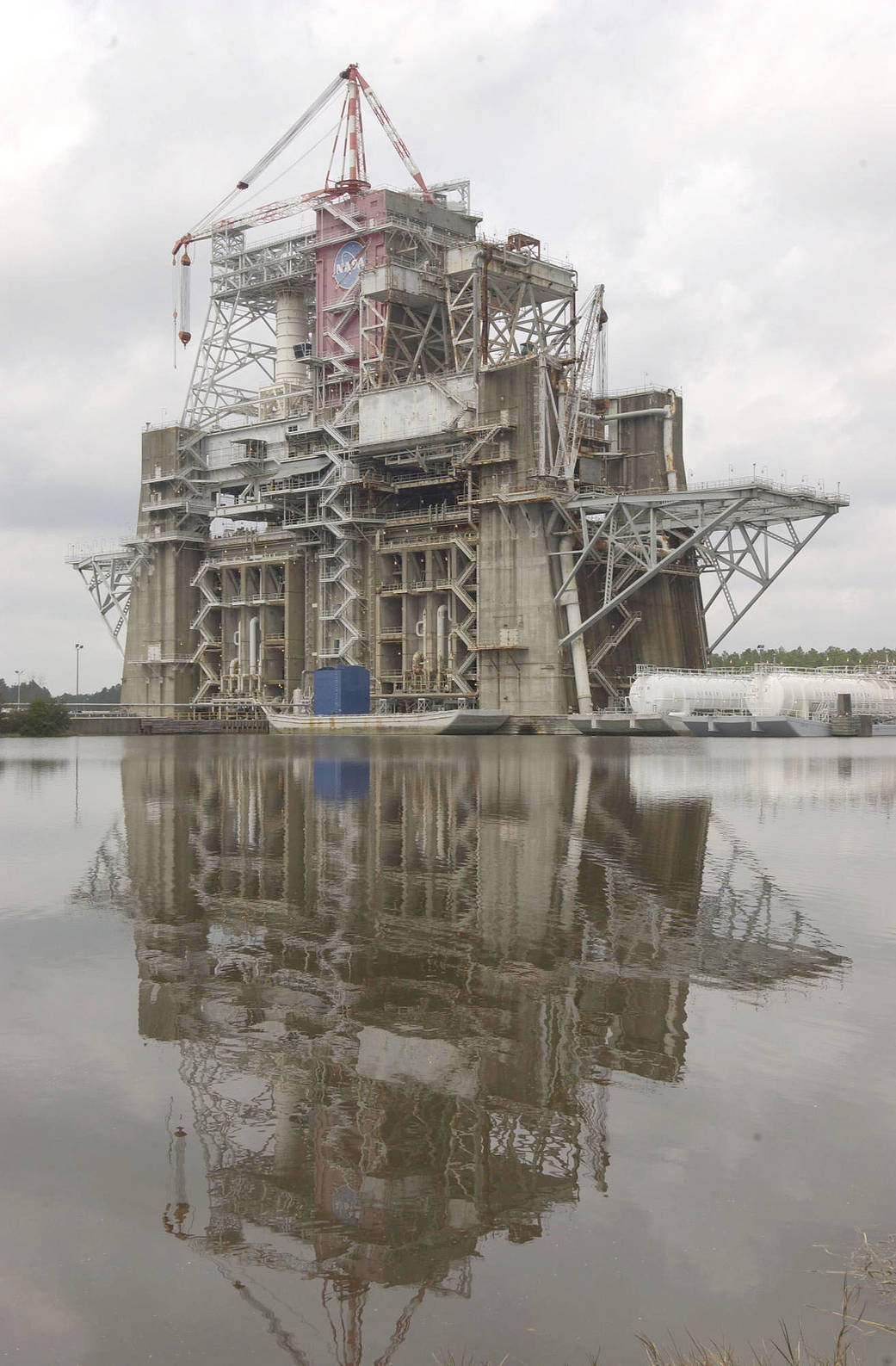Before NASA’s new Space Launch System (SLS) flies to space on its inaugural mission in 2017, it will fly in place at the agency’s Stennis Space Center in Mississippi.
The B-2 Test Stand at Stennis, originally built to test Saturn rocket stages that propelled humans to the moon, is being completely renovated to test the SLS core stage in late 2016 and early 2017. The SLS stage, with four RS-25 rocket engines, will be installed on the stand for propellant fill and drain testing and two hot fire tests.

“These tests will help us understand how the spacecraft and engines behave and provide critical information for ensuring mission safety,” said Rick Rauch, manager of the B-2 Test Stand Restoration, Buildout and Test Project. “After all, if there are problems, it’s better to address them on the ground than in the air.”
NASA is developing the SLS to send humans deeper into space than ever before – to places like an asteroid and Mars. The SLS will launch NASA’s Orion spacecraft and other payloads from the agency’s Kennedy Space Center in Florida. The SLS program is managed at Marshall Space Flight Center in Huntsville, Ala. The first test flight of SLS will be in 2017. The rocket will send an uncrewed Orion spacecraft around the moon.
Stennis engineers were asked early in the SLS development process to determine the cost of restoring the B-2 stand to the condition needed for green run testing of the spacecraft’s core stage. A green run is the first time the engines are assembled into a single configuration with the core stage and fired at nearly full-power. This will test the compatibility and functionality of the system to ensure a safe and viable design.
The team spent 18 months conducting structural, mechanical and electrical system evaluations to assess the work needed since Apollo- and space shuttle-era testing.
Once the decision was made to proceed with core stage testing, Stennis engineers began converting original hand-drawn facility blueprints into computer models so design work could be completed. The actual renovation work was divided into three phases: restoration, buildout and special test equipment.
“In the first phase, we are restoring the test facility to its original design condition, where it could be used to test any number of stages,” Rauch explained. “In the second phase, we will focus on building out the stand specifically to accommodate the SLS core stage. Then, in the third phase, we will complete the structural, mechanical and electrical interfaces required to test the core stage.”
Each phase involves assessment, design and contractor support. In the end, no area of the stand will be left untouched, including all structural areas, as well as supporting mechanical, electrical and piping systems. The fundamental design of the stand will not be changed since it originally was built to test rocket stages.
However, the SLS stage is different from the Saturn stages and the space shuttle main propulsion test article installed and fired on the stand in earlier years. It is taller, standing 212 feet. To lift the stage into place, the derrick crane atop the stand must be extended 50 feet. The stand’s weight and thrust takeout structures also must be modified, and a higher support frame must be erected. The process will involve repositioning an existing 1.2 million pound frame about 20 feet and building a new 100-foot-tall superstructure atop it.
“The teams at the Stennis Space Center are doing a great job preparing the B-2 facility,” said John Rector, SLS Stages Green Run test manager at Marshall. “We’re on track to begin testing there in 2016. It’s an exciting time for NASA as we establish a new national capability for future space exploration.” Demolition work began on several test stand levels late last summer. Structural restoration has begun. Work is to be completed in time for delivery of the SLS core stage in 2016, with installation and testing to follow.



























